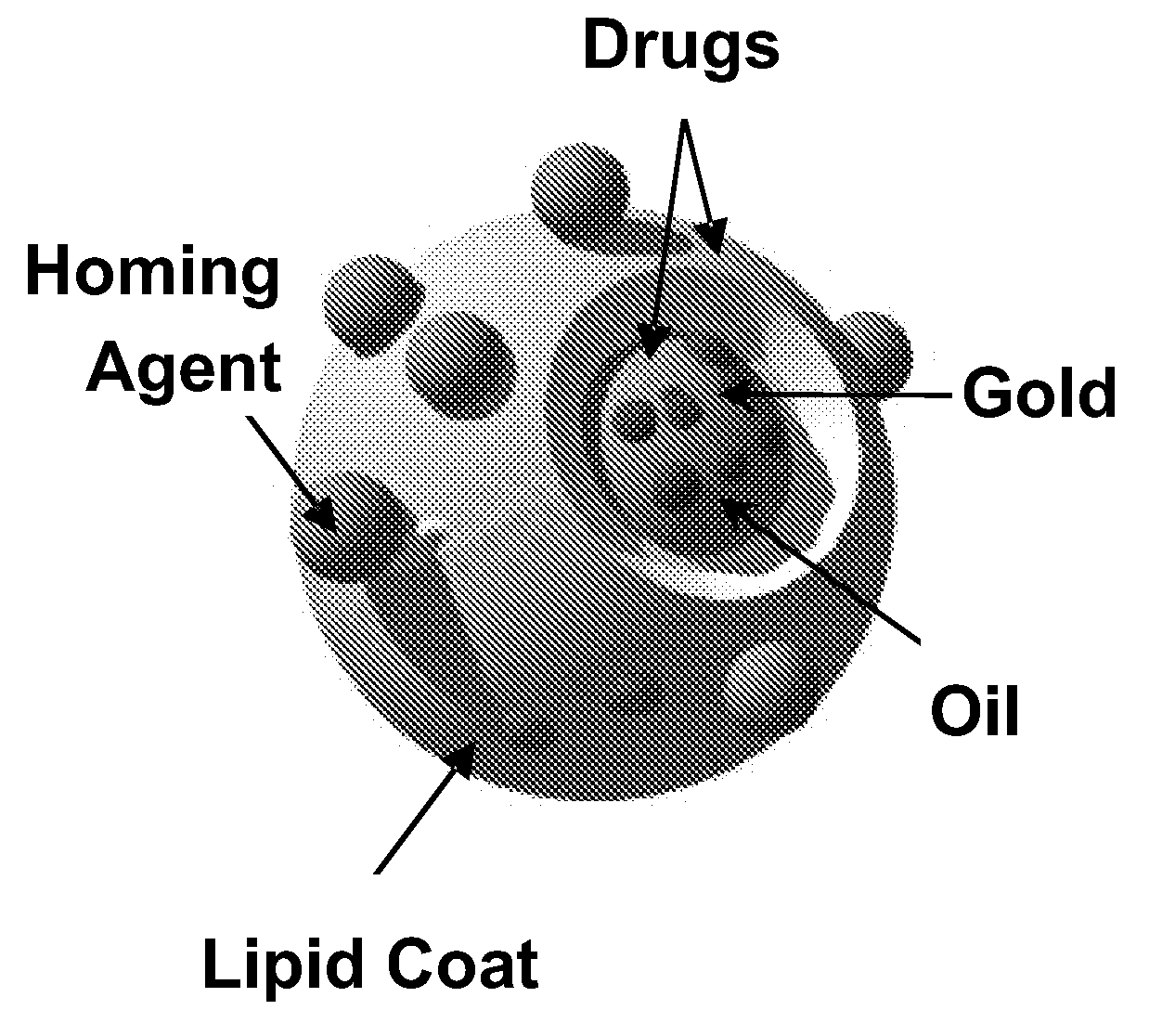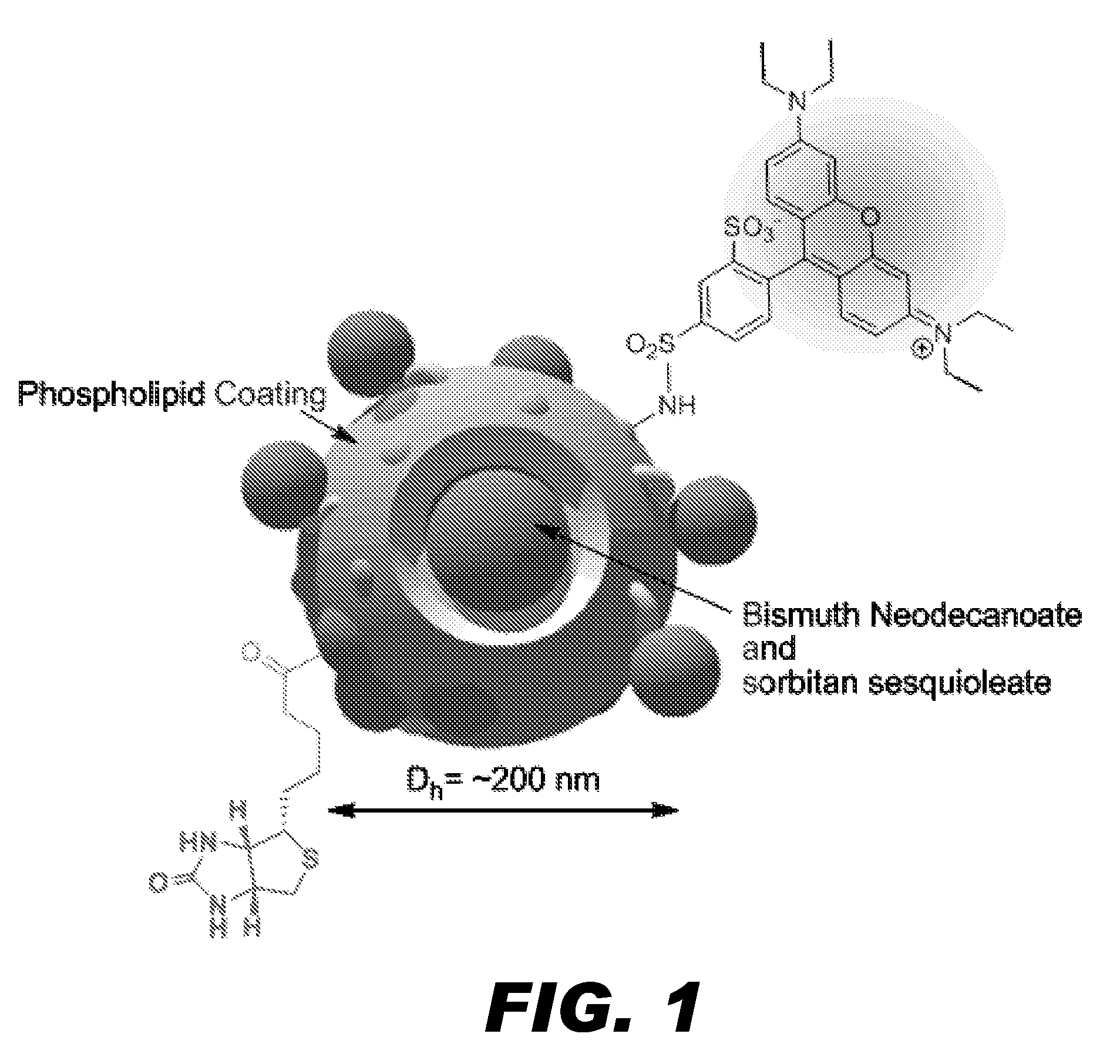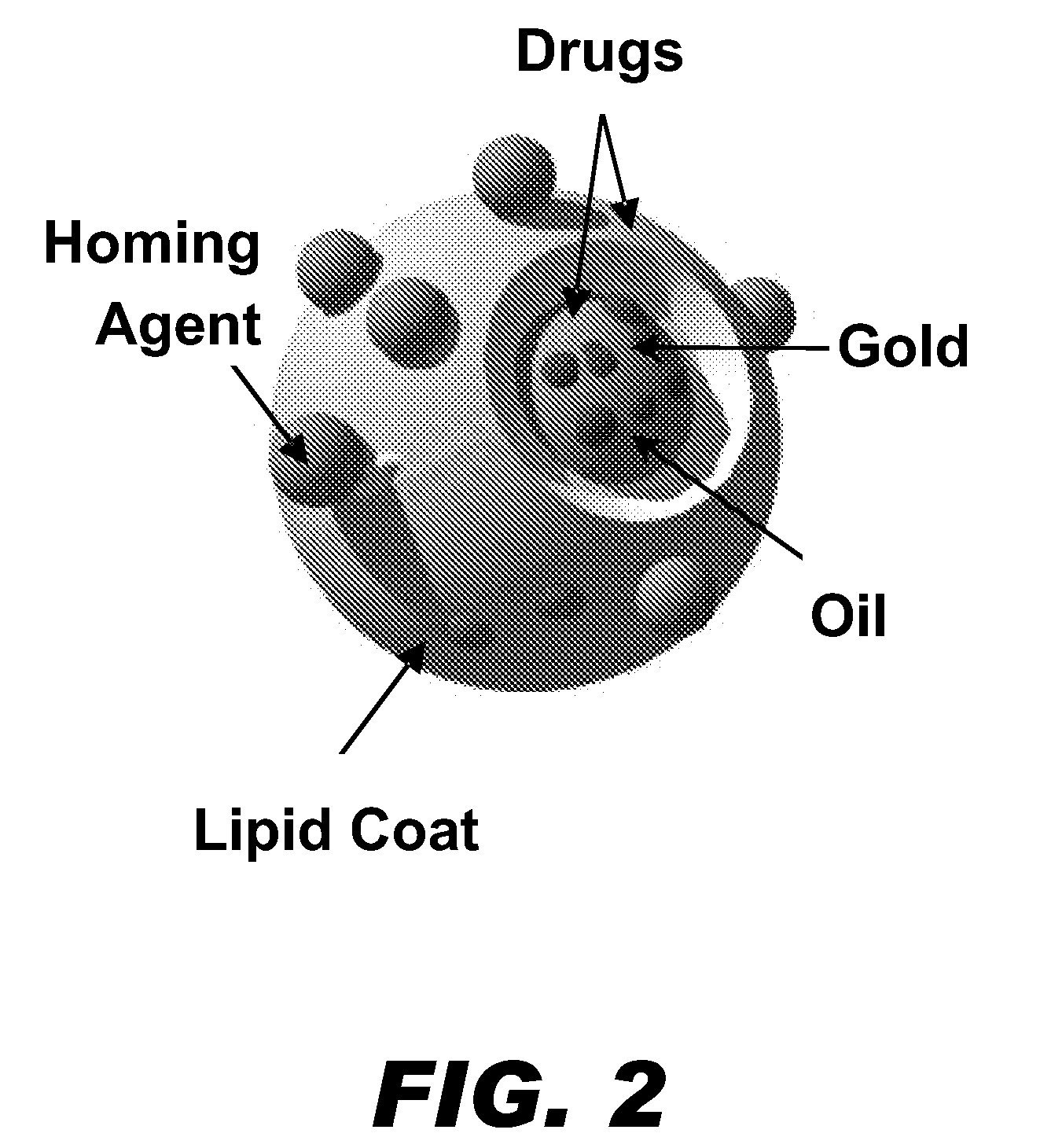Particles for imaging
- Summary
- Abstract
- Description
- Claims
- Application Information
AI Technical Summary
Problems solved by technology
Method used
Image
Examples
example 1
Synthesis and Characterization of Gadolinium Particles
Synthesis of Gadolinium Based Particles
[0089]A prototype particle with a nominal hydrodynamic diameter between 180-250 nm with a payload of 300,000 to 500,000 gadolinium atoms per bound particle has been prepared. These particles incorporate an amphiphilic, hyperbranched cationic polymer that is complexed noncovalently to DTPA-gadolinium chelates to form ˜10 nm sized inverted micelles. These inverted micelles are suspended in oil to form a homogenous, transparent mixture and microfluidized with a lipid surfactant to produce the particles of the invention. The surfactant mixture is typically comprised of phosphatidylcholine, phosphatidylethanolamine with and without polyethylene glycol spacers for ligand coupling, and other lipid conjugates for targeting and fluorescent imaging. To further enhance the metal payloads provided by the amphiphilic gadolinium inverted micelles, organosoluable gadolinium may be incorporated into the oil...
example 2
Synthesis and Characterization of Bismuth Particles
[0099]Following a strategy similar to that detailed in example 2, a prototype particle with a nominal hydrodynamic diameter between 200-350 nm with a payload of 500,000 to 1,000,000 bismuth metal atoms per bound particle has been prepared. (See FIG. 1) These particles incorporate bismuth organometallic chelates (e.g. bismuth neodecanoate) which are suspended in sorbitan sesquioleate and microfluidized with a lipid surfactant to produce particles of the invention. The surfactant mixture is typically comprised of phosphatidylcholine, phosphatidylethanolamine with and without polyethylene glycol spacers for ligand coupling, and other lipid conjugates for targeting and fluorescent imaging.
[0100]The final particle is produced by microfluidization of the bismuth neodecanoate-oil mixture (20% v / v), a outer layer component co-mixture (2.0%, w / v), glycerin (1.7%, w / v), and water for the balance. The outer layer component co-mixture may inclu...
example 3
Synthesis and Characterization of Gold Particles
[0101]Following a strategy similar to that detailed in example 3, a prototype particle with a nominal hydrodynamic diameter between 200-250 nm with a payload of 500,000 to 1000,000 gold metal atoms per bound particle has been prepared. (See FIG. 1) These particles incorporate gold organometallic chelates (e.g. gold 2-ethylhexanoate) which are suspended in sorbitan sesquioleate and microfluidized with a lipid surfactant to produce particles of the invention. The surfactant mixture is typically comprised of phosphatidylcholine, phosphatidylethanolamine with and without polyethylene glycol spacers for ligand coupling, and other lipid conjugates for targeting and fluorescent imaging.
[0102]The final particle is produced by microfluidization of the bismuth neodecanoate-oil mixture (20% v / v), a outer layer component co-mixture (2.0%, w / v), glycerin (1.7%, w / v), and water for the balance. The outer layer component co-mixture may include about ...
PUM
| Property | Measurement | Unit |
|---|---|---|
| Photoacoustic effect | aaaaa | aaaaa |
| Atomic number | aaaaa | aaaaa |
| Hydrophobicity | aaaaa | aaaaa |
Abstract
Description
Claims
Application Information
 Login to View More
Login to View More - R&D
- Intellectual Property
- Life Sciences
- Materials
- Tech Scout
- Unparalleled Data Quality
- Higher Quality Content
- 60% Fewer Hallucinations
Browse by: Latest US Patents, China's latest patents, Technical Efficacy Thesaurus, Application Domain, Technology Topic, Popular Technical Reports.
© 2025 PatSnap. All rights reserved.Legal|Privacy policy|Modern Slavery Act Transparency Statement|Sitemap|About US| Contact US: help@patsnap.com



